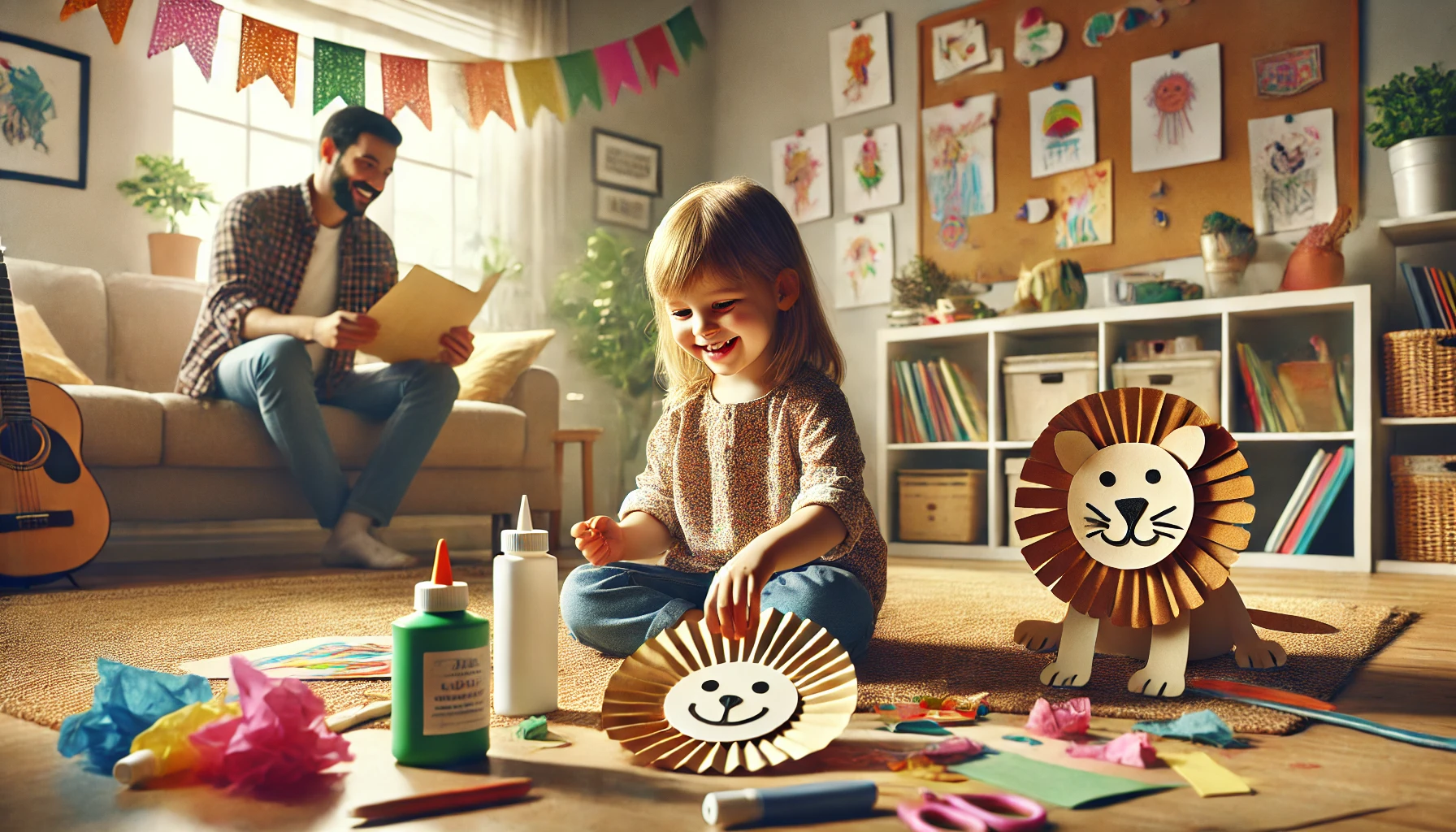Engaging children in arts and crafts at home is a powerful way to stimulate their creativity, fine motor skills, emotional expression, and even problem-solving. These hands-on activities are not only fun but also support early childhood development in meaningful ways. With just a few supplies and a little imagination, parents can turn any day at home into an artistic adventure.
Why Arts and Crafts Are Important in Early Childhood
Arts and crafts allow children to explore, experiment, and express themselves. These activities are essential for:
- Enhancing creativity: Encouraging out-of-the-box thinking
- Building fine motor skills: Cutting, drawing, gluing, and painting improve hand-eye coordination
- Developing patience and focus: Projects require children to follow steps and complete tasks
- Boosting self-esteem: Finishing a project gives a sense of accomplishment
- Encouraging emotional expression: Children can reflect feelings through art
Creating a space where children feel free to explore art helps foster a lifelong love of learning and self-expression.
How to Set Up an Art Space at Home
Before diving into the activities, set up a dedicated art area:
- Use a low table and chairs suitable for children
- Provide washable materials for easy cleanup
- Organize supplies in bins, trays, or small drawers
- Display their finished art on walls or a “gallery corner”
- Use smocks or old t-shirts to protect clothes
Even a small corner can become an inspiring creative space!
Arts and Crafts Ideas for Kids (Ages 3–6)
1. Finger Painting with Natural Dyes
Use food coloring, mashed berries, or diluted coffee for safe, homemade paints. Let kids paint with their fingers on large paper or cardboard.
Skills Developed: Sensory exploration, color recognition, creativity
2. Paper Plate Animals
With just paper plates, colored paper, glue, and markers, children can create lions, fish, owls, or their favorite animals.
Skills Developed: Cutting, assembling, imagination
3. Recycled Material Sculptures
Collect bottle caps, toilet paper rolls, cardboard, and buttons. Encourage children to build robots, castles, or abstract art.
Skills Developed: Environmental awareness, engineering concepts, problem-solving
4. Handprint Art
Dip hands in paint and create trees, flowers, or animals by stamping and decorating handprints.
Skills Developed: Fine motor coordination, creativity
5. DIY Puppets
Use socks, paper bags, or felt to create animal or character puppets. Children can later use them in storytelling or role-playing.
Skills Developed: Language development, storytelling, emotional expression
6. Tissue Paper Collage
Let children tear or cut colorful tissue paper and glue them onto a large sheet to create abstract or themed art.
Skills Developed: Color matching, coordination, patience
7. Salt Dough Creations
Make salt dough (1 cup flour, 1/2 cup salt, 1/2 cup water), shape it into fun figures, and let it air dry or bake.
Skills Developed: Sculpting, following instructions, sensory play
8. Nature Art
Gather leaves, twigs, and flowers during a walk, then glue them onto paper to create seasonal art.
Skills Developed: Observation, connection with nature, creativity
9. Sticker Storyboards
Use stickers and let your child create a picture story on paper, adding drawings or written sentences if appropriate.
Skills Developed: Sequencing, storytelling, literacy
10. Homemade Stamps
Cut shapes into sponges or use potato halves as stamps with washable paint. Let children stamp designs freely.
Skills Developed: Pattern creation, printing skills, fine motor control
Tips for Parents to Encourage Artistic Exploration
- Avoid perfectionism: Let children enjoy the process rather than focus on the result
- Offer choices: Allow freedom in choosing colors, shapes, and materials
- Participate: Create art alongside your child to model enthusiasm
- Ask open-ended questions: “What did you like most about this project?”
- Celebrate their work: Display their creations proudly and talk about them
Safety and Clean-Up Tips
- Always supervise the use of scissors, glue, and small objects
- Use non-toxic, washable supplies
- Cover tables with newspaper or plastic
- Keep wet wipes or a cloth nearby
- Encourage kids to help clean up as part of the activity
A Lasting Impact Through Creativity
Arts and crafts help children develop more than artistic skills — they gain confidence, patience, and a sense of accomplishment. By making time for creativity at home, parents foster a positive learning environment that children will remember for years to come. It’s not about creating perfect art, but about encouraging exploration, joy, and discovery.
